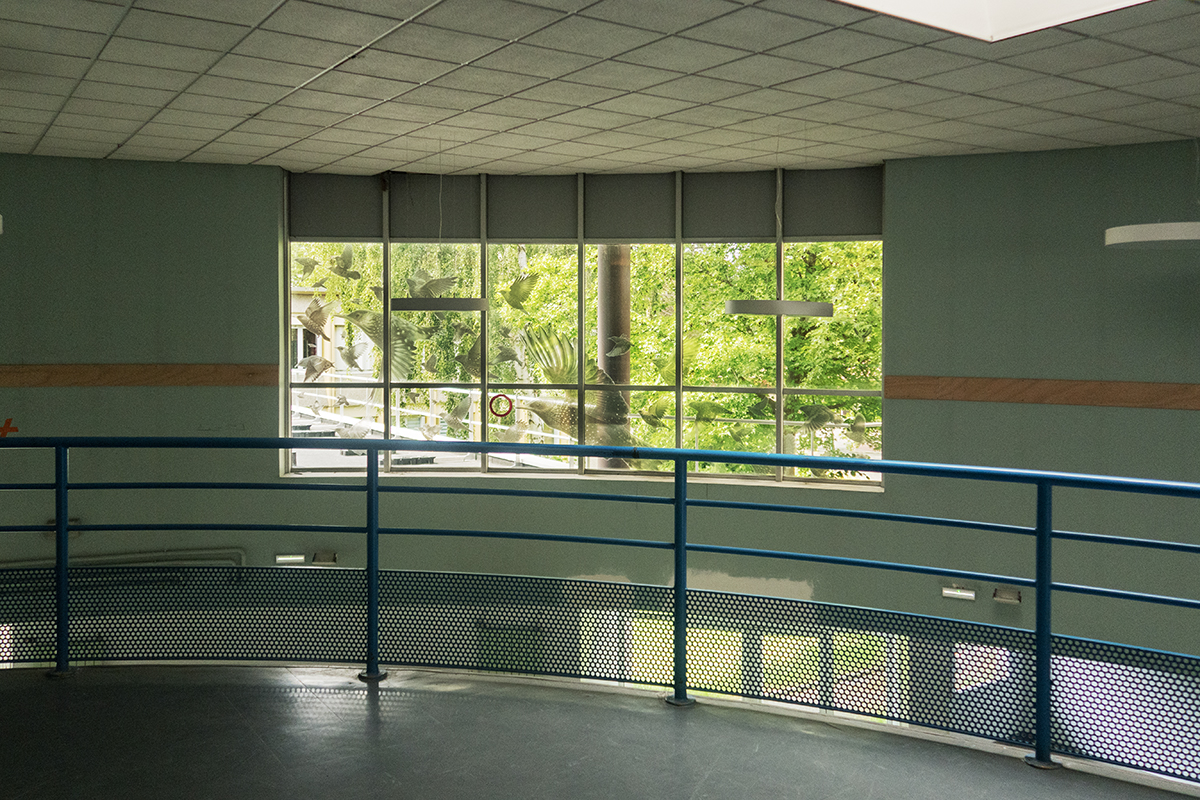The Whole, 2023
Mon
travail tente de poser la question d’une architecture du regard, et
d’interroger non seulement son instauration dans l’espace, mais aussi - et
surtout - dans le temps. J’envisage, par conséquent, tout regard depuis la
modernité comme un regard « instrumenté », pour reprendre l’expression de
Delphine Gleizes et Denis Reynaud. Mon rôle, en tant qu’artiste, serait d’être
le guet de ces instruments, de ces témoignages, afin d’en assurer l’archive. Ce
rôle de « guet » est aussi à prendre en son sens direct : celui qui observe,
dans la finalité de veiller. Si j’essaie de faire prendre conscience au
spectateur du caractère construit de son regard, c’est pour qu’il s’en émancipe
: qu’il ne se limite pas à un sens, mais qu’il l’interroge, afin d’en mieux
percevoir la complexité. Nous nous laissons duper, leurrer par notre regard,
prenant pour réalité ce qui n’est qu’une allégorie. À la suite de Benjamin, et
de Sebald surtout, j’aimerais renverser ce rôle de l’allégorie : l’Histoire
n’est qu’une suite de catastrophes, souvent dues à une illusion sur soi. Il est
de notre intérêt de veiller à prendre conscience de ces leurres, en en
proposant l’archive.
Les projets The Whole et Safe distance vont ensemble. Ils ont
permis d’explorer une façon de considérer l’espace. Au cours d’un workshop en Baie de Somme, et d’une longue marche solitaire, j’ai été confrontée à un
obstacle invisible. L’horizon était impossible à approcher, parce que la marée
et la terre mouillée rendaient inaccessible toute progression. À errer, j’ai
vu au loin un tumulus et des courganes que j’ai cherché à approcher. Elles
se sont révélées par la suite être des cabines d’observations de chasseurs de
canards ; de là, j’ai considéré la Baie de Somme comme une réserve
ornithologique, et ai visité un lieu d’observation constitué d’une cabine qui
cache l’observateur. Ce confort caché du spectateur a trouvé un écho avec ma
réflexion sur le sujet de regard et la place du spectateur dans une salle
d’exposition.
___
My work attempts to raise the issue of an
architecture of the gaze, and to question not only its establishment in space,
but also - and above all - in time. I therefore see every gaze since modernity
as an “instrumented” gaze, to use Delphine Gleizes and Denis Reynaud's
expression. My role, as an artist, would be to keep a lookout for these
instruments, these testimonies, in order to archive them. This role of
“watchman” is also to be understood in its direct sense: as one who observes,
with a purpose to watch over. If I try to impress upon viewers the constructed
nature of their gaze, it's so that they can emancipate themselves from it: that
they don't limit themselves to one meaning, but question it, in order to better
perceive its complexity. We allow ourselves to be fooled by our own gaze,
taking for reality what is merely an allegory. Following in the footsteps of
Benjamin, and Sebald in particular, I'd like to turn this role of allegory on
its head: History is nothing but a series of catastrophes, often due to
self-delusion. It's in our interest to make sure we're aware of these lures, by
proposing an archive of them.
These two projects (Safe distance &The Whole) go hand in hand. They allowed
me to explore a new way of looking at space. During a workshop in the Somme
Bay, and a long solitary walk, I was confronted with an invisible obstacle. The
horizon was unapproachable, because the tide and the wet land made progress
impossible. As I wandered, I saw a mound in the distance and some kurgans,
which I tried to approach. These later turned out to be duck hunters' cabins,
and I came to think of the Somme Bay as an ornithological reserve, visiting an
observation site consisting of a cabin that hides the observer. This hidden
comfort for the viewer echoed my thoughts on the subject of the gaze and the viewer's
place in an exhibition room.








